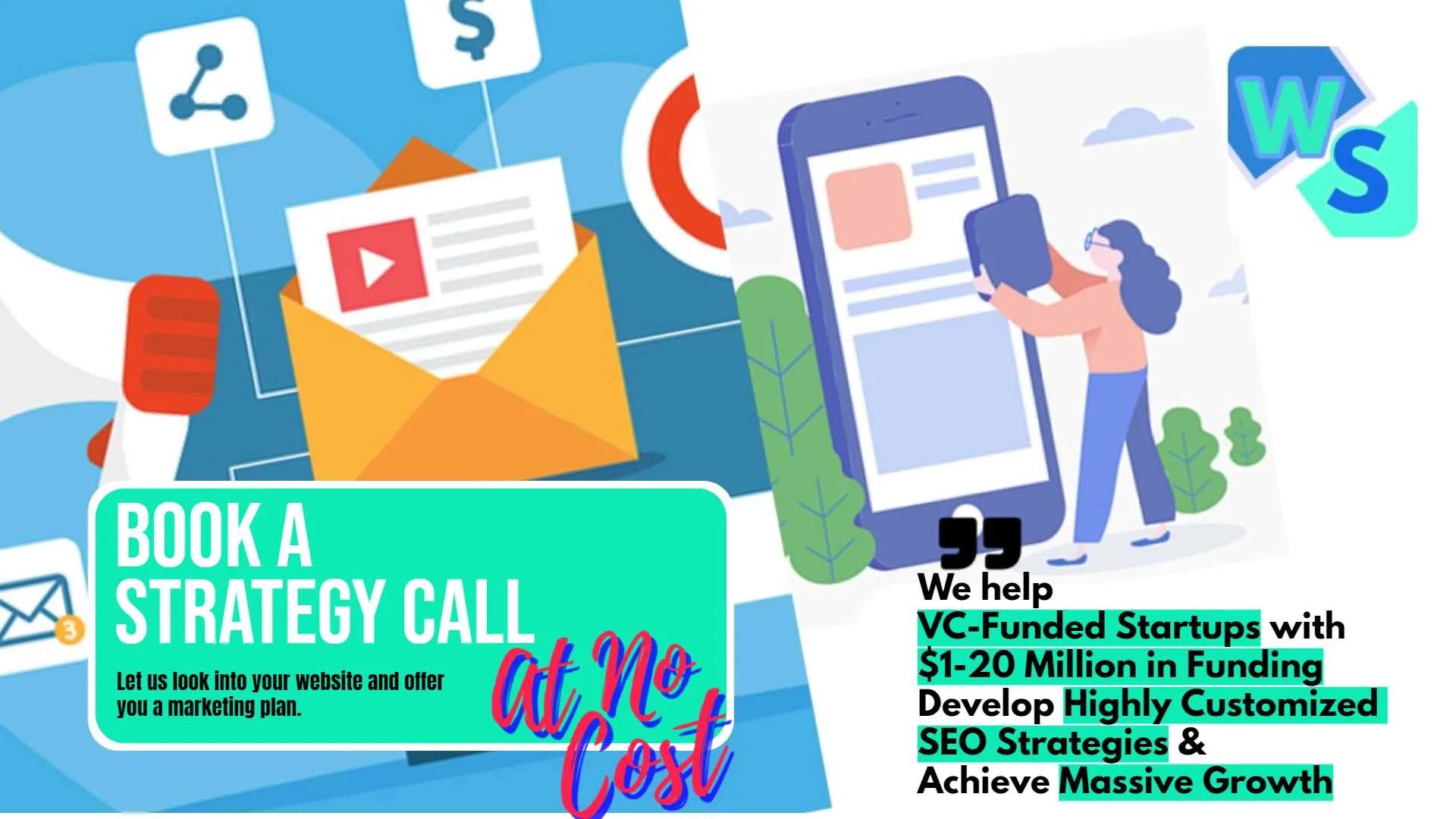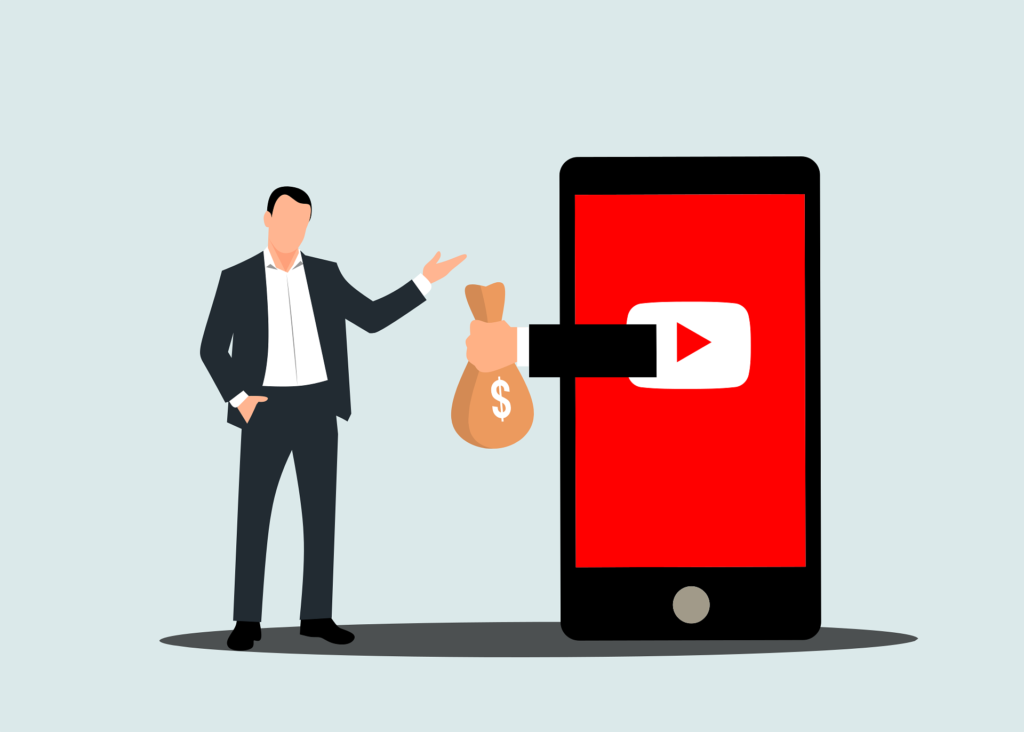In today’s digital world, social media is more than just a platform for sharing updates and connecting with friends. It’s a powerful tool for nonprofits to raise funds and awareness. With creative and strategic use of social media, nonprofits can reach a wider audience, engage supporters, and inspire donations. Whether you’re a small charity or a large organization, the right social media strategies can make a big difference.
Host a Virtual Fundraising Event

Leverage Virtual Galas and Benefit Concerts
Virtual galas and benefit concerts can replicate the high-impact experience of in-person events. These events offer a blend of entertainment, engagement, and fundraising, making them highly effective.
Plan a Star-Studded Virtual Gala
For a virtual gala, invite local celebrities, influencers, or notable personalities to participate. This can include musicians, artists, authors, or actors who can attract a larger audience. Plan a mix of performances, speeches, and interactive segments to keep attendees engaged.
Promote the event through social media campaigns, email newsletters, and collaborations with your celebrity guests. Create a dedicated event page where attendees can register, make donations, and access the live stream. Offer exclusive experiences, such as virtual meet-and-greets or personalized shout-outs, as incentives for higher donations.
Organize Interactive Workshops and Classes
Hosting interactive workshops or classes can provide value to participants while raising funds. This approach works well if you can leverage the expertise within your organization or partner with professionals willing to donate their time.
Offer Skill-Building Workshops
Identify areas where your team or volunteers have expertise, such as cooking, art, fitness, or professional skills. Plan a series of virtual workshops or classes that supporters can join in exchange for a donation. Use platforms like Zoom or Microsoft Teams for the interactive sessions.
Promote these workshops on social media by highlighting the skills participants will learn and the impact their donations will have. Share testimonials from previous attendees to build credibility and excitement. Encourage participants to share their experiences on social media, tagging your nonprofit to reach a broader audience.
Launch a Virtual Telethon
A virtual telethon can bring together live entertainment, real-time updates, and fundraising appeals, creating a dynamic and engaging experience for supporters.
Host a Themed Telethon
Choose a compelling theme for your virtual telethon, such as “24 Hours of Hope” or “Concert for Change.” Line up a variety of performances, interviews, and stories that align with your theme. Use social media to broadcast the event live and provide multiple ways for viewers to donate, such as text-to-give, online donation forms, and social media integrations.
Engage your audience by incorporating interactive elements, such as live polls, Q&A sessions, and shout-outs to donors. Share progress updates and highlight major milestones throughout the telethon to keep the excitement high and encourage continued donations.
Conduct a Virtual Marathon or Challenge
Virtual marathons or challenges can combine fitness, fun, and fundraising, making them a great way to engage supporters.
Plan a Virtual Fitness Challenge
Organize a virtual fitness challenge where participants commit to running, walking, cycling, or completing a specific fitness activity over a set period. Participants can register through your website and create fundraising pages to collect donations from their networks.
Promote the challenge on social media by sharing training tips, participant stories, and regular updates. Create a sense of community by encouraging participants to share their progress using a dedicated hashtag. Offer incentives, such as branded merchandise or recognition on your social media channels, to motivate participants and donors.
Create a Virtual Talent Show
A virtual talent show can be a fun and engaging way to showcase the diverse talents within your community while raising funds.
Host a Community Talent Show
Invite supporters to showcase their talents, whether it’s singing, dancing, comedy, or any other skill. Use social media to promote the talent show, encourage sign-ups, and share teaser videos of participants. Stream the event live on platforms like Facebook, YouTube, or Instagram.
Charge an entry fee for participants and encourage viewers to vote for their favorite acts with donations. Highlight the talents and stories of the participants on social media to create buzz and excitement. Recognize the top performers with awards and feature them on your social media channels.
Leverage User-Generated Content
Develop Community Stories Campaigns
User-generated content can be incredibly powerful when it tells the story of how your nonprofit impacts real lives. Developing a campaign around community stories can drive engagement and donations by highlighting personal connections to your cause.
Launch a “Stories of Impact” Campaign
Invite your supporters and beneficiaries to share their personal stories about how your nonprofit has made a difference in their lives. Create a dedicated hashtag for this campaign and encourage participants to share their stories through posts, videos, and photos on their social media channels.
Promote this campaign through your own social media platforms, website, and email newsletters. Share selected stories on your official channels, highlighting the individuals and their experiences. This not only provides powerful, authentic content but also helps potential donors see the real-world impact of their contributions.
Implement a Monthly Spotlight Series
A monthly spotlight series can regularly feature user-generated content, keeping your audience engaged and providing a steady stream of authentic stories.
Create an “Advocate of the Month” Series
Each month, select a supporter, volunteer, or beneficiary to feature on your social media channels. Share their story, why they support your nonprofit, and how they have been impacted by or contributed to your cause. Encourage them to share their spotlight post with their own networks.
Promote the spotlight series across all your social media platforms and your website. This regular feature not only celebrates your community members but also encourages others to engage and share their stories in hopes of being featured.
Create a Testimonial Collection Initiative
Collecting and sharing testimonials can significantly enhance credibility and emotional appeal, driving more donations and support.
Launch a Testimonial Collection Drive
Reach out to your supporters, volunteers, and beneficiaries to gather testimonials about their experiences with your nonprofit. Use surveys, email requests, and social media prompts to collect these testimonials. Ask for permission to use their photos and stories in your marketing materials.
Share these testimonials on your social media channels, website, and fundraising campaigns. Highlight different themes each week, such as volunteer experiences, beneficiary stories, or donor testimonials. This approach not only provides varied and engaging content but also reinforces the positive impact of your organization.
Encourage Social Media Takeovers
Social media takeovers by supporters or beneficiaries can provide fresh perspectives and authentic content that resonates with your audience.
Plan Regular Social Media Takeovers
Invite a supporter, volunteer, or beneficiary to take over your social media accounts for a day. They can share their daily activities, personal stories, and reasons for supporting your nonprofit. This behind-the-scenes look can be compelling and engaging for your followers.
Promote the takeovers in advance, providing a schedule and teasers of what to expect. Encourage the person taking over to engage with followers by responding to comments and messages. After the takeover, share highlights and key moments to extend the reach and impact of the content.
Facilitate Peer Testimonials
Encouraging supporters to share testimonials from their peers can create a sense of community and trust, enhancing the overall impact of your fundraising efforts.
Launch a Peer Testimonial Campaign
Ask your supporters to collect and share testimonials from their friends, family, and colleagues who have also been impacted by or involved with your nonprofit. Create a dedicated platform or hashtag for these testimonials to be shared.
Feature these peer testimonials on your social media channels and website. Highlight the connections and relationships within your community, showing the broad support for your cause. This approach not only diversifies your content but also leverages the networks of your supporters to reach new audiences.
Collaborate with Influencers
Develop Long-Term Partnerships
Forming long-term partnerships with influencers can provide sustained engagement and continuous support for your nonprofit. Instead of one-off collaborations, building ongoing relationships can deepen the influencer’s connection to your cause and provide more consistent advocacy.
Establish Ambassador Programs
Create an ambassador program where selected influencers commit to representing and supporting your nonprofit over a longer period. These ambassadors can regularly share updates, participate in events, and promote your campaigns. Offer them exclusive insights and opportunities to be involved deeply with your organization.
Promote these ambassadors on your social media channels and website, highlighting their contributions and commitment. Provide them with branded materials, exclusive content, and regular updates to keep them engaged. This sustained relationship helps build a strong, authentic connection between the influencer and your nonprofit, encouraging their followers to support your cause.
Co-Create Content with Influencers
Collaborating with influencers to co-create content can produce unique and engaging materials that resonate with their followers and your supporters. This content can range from blog posts and videos to social media series and live streams.
Develop a Content Calendar with Influencers
Work with influencers to create a content calendar that aligns with your nonprofit’s goals and campaigns. Plan a variety of content types, such as behind-the-scenes videos, interviews with beneficiaries, or educational posts about your cause. Ensure the content is authentic and reflects the influencer’s style to maintain credibility.
Share the co-created content across both your nonprofit’s and the influencer’s social media channels. Highlight the collaborative nature of the content to engage both audiences. This strategy not only amplifies your reach but also leverages the influencer’s creative input to produce compelling content.
Leverage Influencer-Led Fundraising Campaigns
Influencers can lead fundraising campaigns on their platforms, tapping into their audience’s support and driving donations directly to your nonprofit. These campaigns can be particularly effective if the influencer has a strong personal connection to your cause.
Organize Influencer-Led Crowdfunding Campaigns
Partner with influencers to launch crowdfunding campaigns on platforms like GoFundMe, Kickstarter, or JustGiving. Provide them with all the necessary information and resources to set up the campaign and promote it effectively.
Support the campaign by sharing updates, milestones, and thank-you messages on your social media channels. Encourage the influencer to share their personal connection to the cause and why they are supporting your nonprofit. This personalized appeal can significantly boost engagement and donations from their followers.
Host Collaborative Events
Hosting events in collaboration with influencers can create buzz and draw in new supporters. These events can be virtual or in-person and can range from charity auctions and galas to workshops and meet-and-greets.
Plan Joint Virtual Events
Work with influencers to plan and host virtual events such as live Q&A sessions, panel discussions, or interactive workshops. Use platforms like Zoom, Instagram Live, or Facebook Live to broadcast the event. Promote the event extensively on both your nonprofit’s and the influencer’s social media channels.
During the event, provide opportunities for attendees to donate, ask questions, and engage with the content. Follow up with highlights and thank-you posts to maintain engagement and show appreciation. This collaboration not only expands your reach but also provides valuable content to your audience.
Engage Micro-Influencers for Niche Campaigns
Micro-influencers, with smaller but highly engaged audiences, can be incredibly effective for niche campaigns. Their followers often trust their recommendations more, making them valuable partners for targeted fundraising efforts.
Launch Niche Campaigns with Micro-Influencers
Identify micro-influencers whose followers align closely with your nonprofit’s mission. Collaborate with them to create niche campaigns that resonate with their audience. This could include targeted fundraising drives, awareness campaigns, or educational series about specific aspects of your cause.
Provide micro-influencers with detailed information, visuals, and talking points to ensure the campaign is effective and aligned with your goals. Promote these niche campaigns on your social media channels, highlighting the unique aspects and the influencer’s involvement. This targeted approach can drive higher engagement and donations from specific audience segments.
Run a Peer-to-Peer Fundraising Campaign
Enhance Personalization for Fundraisers
Personalization can significantly boost the success of peer-to-peer fundraising campaigns by making fundraisers feel more connected to the cause and empowered in their efforts.
Provide Personalized Fundraising Pages
Create a platform where supporters can set up personalized fundraising pages. Allow them to add their own photos, videos, and stories about why they are supporting your cause. Provide templates and tips to help them create compelling and engaging content.
Encourage fundraisers to share their personalized pages on their social media channels. Highlight the most creative and effective pages on your nonprofit’s social media to inspire others. This approach not only enhances engagement but also makes the fundraising efforts feel more personal and meaningful.
Offer Training and Resources
Equipping your supporters with the right tools and knowledge can significantly enhance their fundraising efforts. Providing training and resources ensures they feel confident and prepared to raise funds effectively.
Develop a Fundraising Toolkit
Create a comprehensive fundraising toolkit that includes resources such as social media graphics, email templates, and fundraising tips. Offer training sessions or webinars to teach supporters how to use these tools and maximize their impact.
Share success stories and best practices from previous fundraisers to provide inspiration and guidance. Regularly update the toolkit with new content and promote it through your social media channels. This support can empower your fundraisers to achieve their goals and feel more connected to your nonprofit.
Create a Sense of Community Among Fundraisers
Building a community among your fundraisers can foster camaraderie and mutual support, enhancing the overall success of your campaign.
Launch a Fundraiser Support Group
Set up a private Facebook group or Slack channel where fundraisers can connect, share tips, and support each other. Facilitate discussions by posting regular prompts, sharing updates, and highlighting achievements within the group.
Encourage fundraisers to share their progress, challenges, and successes. Host regular virtual meetups or live Q&A sessions to provide additional support and build a sense of community. This network can motivate fundraisers to stay engaged and committed to their goals.
Implement Gamification Elements
Gamification can make fundraising more engaging and fun, motivating supporters to participate and compete in a friendly manner.
Introduce Fundraising Challenges and Rewards
Create fundraising challenges with specific goals and offer rewards for achievements. For example, you could challenge fundraisers to raise a certain amount within a week or get a specific number of donors. Offer prizes such as branded merchandise, exclusive experiences, or recognition on your social media channels.
Use leaderboards to track and showcase the top fundraisers, adding a competitive element to the campaign. Share regular updates and celebrate milestones publicly to maintain excitement and engagement. This approach can drive higher participation and donations through healthy competition.
Integrate Storytelling into Fundraising Efforts
Storytelling can make fundraising efforts more compelling by connecting potential donors emotionally to the cause. Encourage your fundraisers to use storytelling techniques to share their personal connections to your nonprofit.
Provide Storytelling Workshops
Offer workshops or online courses that teach fundraisers how to craft and share their stories effectively. Cover topics such as identifying key messages, using visuals, and leveraging social media platforms for storytelling.
Share examples of powerful stories from past fundraisers to provide inspiration and guidance. Encourage fundraisers to share their stories through blog posts, social media updates, and video content. Highlight these stories on your nonprofit’s channels to amplify their reach and impact.

Utilize Storytelling to Inspire Donations
Develop a Narrative Arc for Campaigns
Creating a cohesive narrative arc for your fundraising campaigns can help engage supporters and keep them invested over time. A well-structured story with a clear beginning, middle, and end can guide your audience through the journey of your campaign.
Craft a Campaign Storyline
Start by outlining the main elements of your campaign’s story: the problem you are addressing, the solution your nonprofit provides, and the impact of donations. Introduce key characters, such as beneficiaries, volunteers, and donors, to humanize the narrative.
Break down your campaign into a series of posts that unfold over time, each contributing to the overall story. Use a mix of content types, including videos, photos, and written updates, to keep the narrative engaging. Share progress updates, setbacks, and milestones to maintain momentum and transparency. This ongoing narrative can help build a deeper connection with your audience and encourage continued support.
Highlight Transformational Stories
Transformational stories that show dramatic changes brought about by your nonprofit’s work can be particularly compelling. These stories can inspire donations by demonstrating the tangible impact of supporters’ contributions.
Feature Before-and-After Stories
Identify individuals or communities that have experienced significant transformations due to your nonprofit’s efforts. Share their stories in a before-and-after format, highlighting the challenges they faced, the support they received, and the positive changes that resulted.
Use visuals, such as photos and videos, to illustrate the transformation. Share these stories on your social media channels, website, and email newsletters. Encourage supporters to share these posts to spread the word. This approach not only showcases the impact of your work but also provides powerful, relatable narratives that can motivate others to donate.
Use Multimedia Storytelling
Different types of media can enhance storytelling by providing various ways for your audience to engage with your content. Combining text, images, and videos can create a more immersive and impactful experience.
Create Multimedia Story Campaigns
Plan multimedia campaigns that incorporate videos, infographics, photo essays, and written stories. For example, start with a short video introduction to the campaign, followed by detailed photo essays and written stories that dive deeper into specific aspects of your work.
Share these multimedia stories across all your social media platforms, ensuring each piece of content is optimized for the platform it’s on. Use Instagram for visually-driven stories, Facebook for longer narratives, and Twitter for quick updates and links to more detailed content. This multi-faceted approach can reach a wider audience and provide a richer storytelling experience.
Engage Supporters in Storytelling
Involving your supporters in storytelling can create a sense of ownership and community, making your campaign more relatable and authentic.
Host a Storytelling Contest
Invite your supporters to share their own stories about why they support your nonprofit. Launch a storytelling contest where participants can submit written stories, photos, or videos. Provide guidelines and themes to help guide their submissions.
Promote the contest on your social media channels and offer prizes or recognition for the best stories. Feature the winning entries on your social media pages, website, and email newsletters. This not only generates engaging content but also strengthens the sense of community and connection among your supporters.
Leverage Real-Time Storytelling
Real-time storytelling, such as live updates from events or on-the-ground reporting, can create a sense of immediacy and urgency, encouraging more immediate donations.
Stream Live Updates from the Field
During fundraising events or field operations, use live streaming platforms like Facebook Live, Instagram Live, or YouTube Live to share real-time updates. Show your team in action, interview beneficiaries, and provide live progress reports on fundraising goals.
Promote the live streams in advance to build anticipation and ensure you have a strong viewership. Engage with viewers in real-time by responding to comments and questions. After the live event, share highlights and key moments to extend the content’s lifespan. This approach can make your audience feel more connected to your cause and inspire them to donate in the moment.
Engage Your Audience with Interactive Content

Implement Interactive Fundraising Thermometers
Interactive fundraising thermometers can visually represent the progress of your fundraising campaigns, encouraging more donations by showing how close you are to your goal. They create a sense of urgency and collective effort, motivating supporters to contribute to the cause.
Use Real-Time Fundraising Thermometers
Embed a real-time fundraising thermometer on your website and share regular updates on social media. Make it interactive by allowing supporters to see their contributions reflected immediately on the thermometer.
Promote the thermometer in your social media posts, email newsletters, and during live events. Encourage supporters to share the thermometer with their networks to expand your reach. Highlight milestones and celebrate when significant progress is made, fostering a sense of community and collective achievement.
Create Interactive Infographics
Interactive infographics can provide engaging and informative content that encourages your audience to learn more about your cause and contribute to your fundraising efforts. These infographics can break down complex information into easily digestible and engaging visuals.
Develop Story-Driven Infographics
Create infographics that tell a story about your nonprofit’s impact. For instance, you can illustrate the journey of a beneficiary, showcasing how donations have made a difference in their lives. Include interactive elements such as clickable sections, hover-over details, and animated graphics.
Share these infographics on your social media channels and website. Encourage your audience to explore the interactive elements and share the infographics with their networks. This approach not only educates your audience about your cause but also engages them in a more dynamic way, making them more likely to donate.
Host Virtual Interactive Tours
Virtual tours can provide an immersive experience, allowing supporters to see the impact of their donations firsthand. This can be particularly effective for nonprofits with physical locations, such as schools, hospitals, or community centers.
Organize Virtual Reality (VR) or 360-Degree Tours
Create VR or 360-degree tours of your facilities or project sites. Use platforms like YouTube, Facebook, or dedicated VR apps to host these tours. During the tour, highlight specific areas where donations have made a significant impact and share stories of beneficiaries.
Promote the tours on social media, inviting supporters to join and explore. Provide options for viewers to donate directly through the tour platform or by linking to your donation page. This immersive experience can deepen their connection to your cause and inspire them to contribute.
Develop Gamified Fundraising Experiences
Gamification can make fundraising more engaging and fun, motivating supporters to participate through interactive challenges and rewards.
Launch Fundraising Games and Challenges
Create online games or challenges that supporters can participate in while raising funds for your nonprofit. For example, develop a trivia game related to your cause, where participants can earn points for correct answers and see their names on a leaderboard. Offer rewards or recognition for top participants.
Promote these games on your social media channels, encouraging supporters to compete with their friends and family. Share progress updates, highlight top players, and celebrate milestones to keep the momentum going. This interactive and competitive element can drive higher engagement and donations.
Use Interactive Video Content
Interactive videos allow viewers to engage with the content actively, making it more memorable and impactful. These videos can include clickable elements, choices, and branching narratives.
Produce Choose-Your-Own-Adventure Videos
Create a series of interactive videos where viewers can make choices that affect the outcome of the story. For example, produce a video that follows a day in the life of a beneficiary, allowing viewers to choose different paths and see how their donations can impact various aspects of their lives.
Share these videos on your social media channels and website. Encourage viewers to explore different storylines and share their experiences. This immersive approach can provide a deeper understanding of your cause and motivate viewers to donate.
Conclusion
Engaging your audience through creative and interactive social media fundraising ideas is crucial for the success of any nonprofit organization. By leveraging user-generated content, collaborating with influencers, running peer-to-peer campaigns, utilizing storytelling, and incorporating interactive content, you can significantly enhance your fundraising efforts and connect more deeply with your supporters.
Creating compelling and personalized experiences helps build a strong community around your cause, driving engagement and donations. Remember, the key to successful social media fundraising lies in authenticity, consistency, and creativity. Always listen to your audience, adapt your strategies based on feedback, and continue to innovate.
Read Next:
- Top Keyword Research Tools Every Startup Should Use
- The Ultimate Guide to Keyword Research for Startup SEO
- Technical SEO for Startup Mobile Apps: App Indexing and Ranking
- SaaS SEO Reporting: Tracking Metrics and Performance
- SEO for SaaS Pricing Pages: Conversion and Ranking Strategies






















Comments are closed.